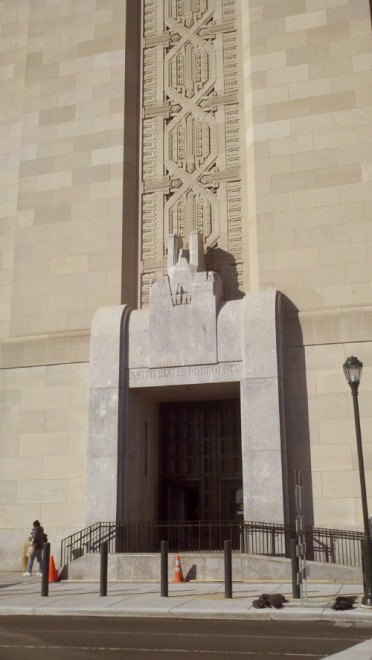I read Catesby Leigh’s interesting article, “Uncle Sam’s Buildings,” in The American Conservative. He argues in favor of the federal buildings that were built in the prewar era, and which more or less followed the classical style, and is critical of the modernist era, perhaps best characterized by the awful FBI headquarters building in DC. His essay brought up a question for me. The examples of classical federal buildings that he admires are all from a particular era, and his essay implies that this architectural style should continue ad infinitum. Whatever the merits of this suggestion, it does fly in the face of all we know about history. Architecture has never stood still: Bramante was followed by Bernini, then Wren, then Edwin Lutyens, then Paul Cret. There are many examples of federal buildings of the 1930s (which Leigh conveniently ignores), that represent a different sort of traditional approach: in my city, Philadelphia, Rankin & Kellog’s main post office across from 30th Street Station (illustrated above), and Harry Sternfield’s Nix federal courthouse and post office; in DC, Cret’s Federal Reserve Board Building, and Bertram Goodhue’s National Academy of Sciences on the National Mall. None of these architects used the usual paraphernalia of Beaux-Arts classicism, yet their work is clearly not “modernist.” Would you call it classical? Not exactly; at the time some people called it Moderne. Goodhue, who resisted suggestions by the Commission of Fine Arts to add a colonnade, called his design “God-knows-what-kind-of-Classic.”
Leigh mentions President Trump’s 2020 executive order stipulating that classical and traditional architecture be given priority in large federal buildings. I think that the intense negative reaction to the executive order, apart from the fact that it came from Trump, had to do with the retrograde image of “buildings with columns.” Yet, as recent history shows, this is by no means the only alternative.

